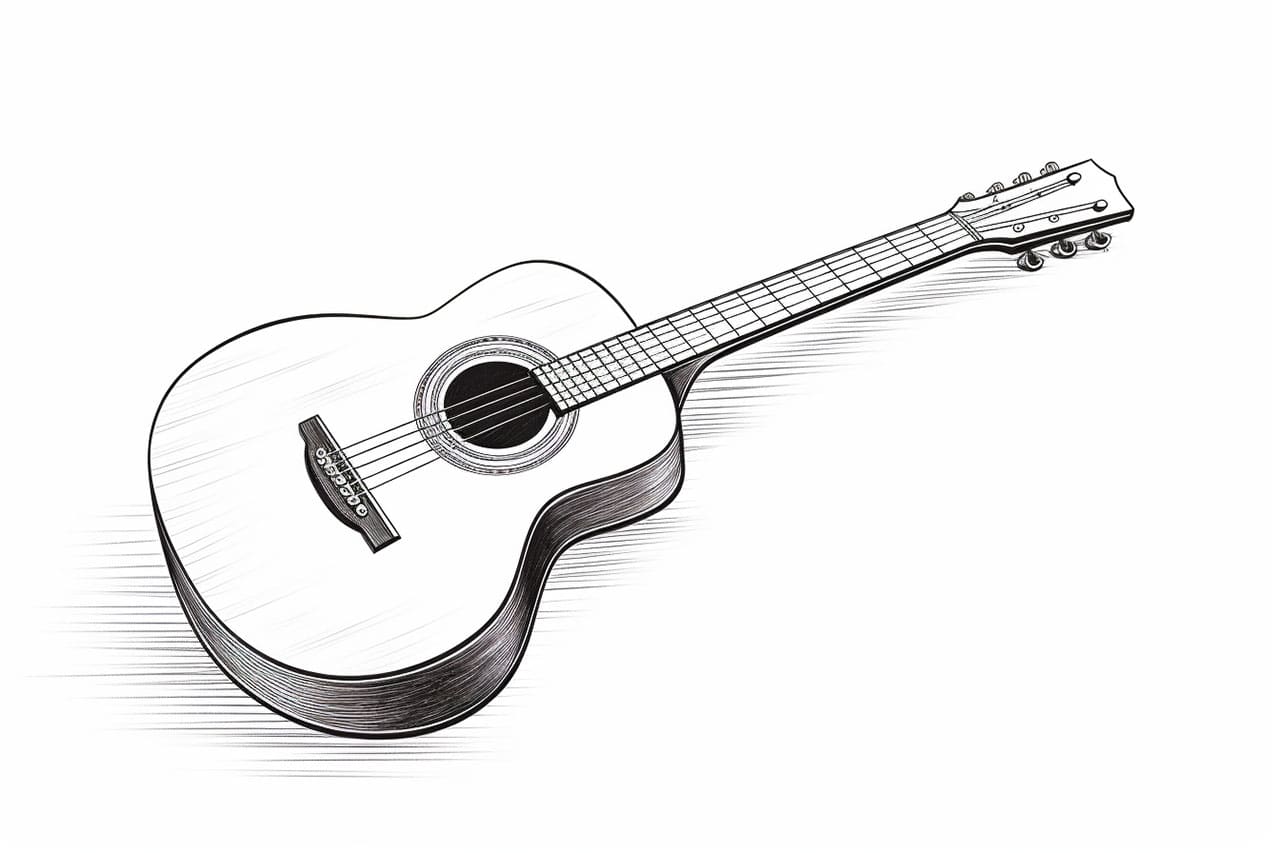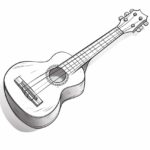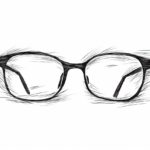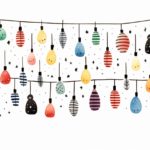Welcome to this step-by-step tutorial on how to draw a guitar. Whether you’re a beginner artist or have some experience, this guide will help you create a realistic and detailed representation of this musical instrument. Follow along with these instructions, and soon you’ll have your very own guitar drawing to be proud of!
Materials Required
Before we begin, let’s gather the materials you’ll need for this drawing:
- Pencil
- Eraser
- Paper
- Ruler
- Fine-tipped marker or pen (optional)
- Colored pencils or markers (optional)
Now that you have everything ready, let’s get started!
Step 1: Outline the Body
Start by drawing a long, curved shape for the body of the guitar. Imagine an hourglass shape, but with the middle section slightly elongated. Use light pencil strokes, as we’ll be refining the lines later. Remember to keep the proportions in mind.
Step 2: Add the Neck
Extend a straight line from the top of the body for the neck of the guitar. Make sure it’s centered and evenly aligned with the body. At the end of the neck, draw a slightly wider shape to represent the headstock.
Step 3: Outline the Headstock
The headstock is the top part of the guitar where the tuning pegs are located. Draw a shape similar to a paddle with rounded corners at the wide end of the neck. Add some detail by drawing the tuning pegs as small circles or rectangles along the top of the headstock.
Step 4: Draw the Fretboard
Extend a long, straight line from the bottom of the headstock to the body. This line represents the fretboard. On the body side of the fretboard, draw small rectangles or circles to represent the frets. Start with larger shapes near the body and gradually make them smaller as you move upward.
Step 5: Sketch the Soundhole and Pickguard
On the body of the guitar, draw a circle or an oval shape slightly below the center. This is the soundhole. Below the soundhole, draw a shape that covers the lower part of the body. This is the pickguard, which protects the guitar from scratches. Feel free to customize the shape of the pickguard based on the guitar design you prefer.
Step 6: Refine the Body and Neck
Using the initial shapes as a guide, refine the outline of the body and neck. Make the curves smoother, adjust any proportions that appear off, and erase any overlapping lines. This step is crucial in achieving a more accurate and polished look for your guitar drawing.
Step 7: Add Detail to the Headstock
Next, it’s time to add more detail to the headstock. Draw a curved line from the top of the headstock to the neck, following the shape of the guitar strings. You can also add the brand name or logo of the guitar manufacturer at the top of the headstock. Use reference images to help you recreate these distinctive details.
Step 8: Shape the Body Contours
Now, let’s add some depth to the body of the guitar. Draw two curved lines on each side of the body to create a three-dimensional appearance. These lines should follow the contour of the guitar and give it a more realistic look.
Step 9: Draw the Bridge and Saddle
At the end of the body, draw a rectangular shape for the bridge. The bridge holds the guitar strings in place. In the middle of the bridge, draw a smaller rectangle or oval for the saddle. The saddle is where the strings rest, and it helps with their height and angle.
Step 10: Refine the Fretboard
Go back to the fretboard and add more detail. Draw small dots or rectangles on the frets to represent their position markers. These markers help the guitarist find specific notes while playing the guitar. You can also draw small curved lines along the edges of the frets to represent the strings.
Step 11: Finalize the Details
Take a moment to review your drawing and make any necessary adjustments. Erase any remaining construction lines, smoothen out the curves, and darken the final lines. If you prefer, you can use a fine-tipped marker or pen to outline your drawing, giving it a more defined and finished appearance.
Conclusion
Congratulations! You have successfully drawn a guitar from start to finish. By following these step-by-step instructions, you’ve created a detailed and realistic representation of this musical instrument. Remember, practice makes perfect, so don’t hesitate to keep refining your skills and experimenting with different styles. Happy drawing!









